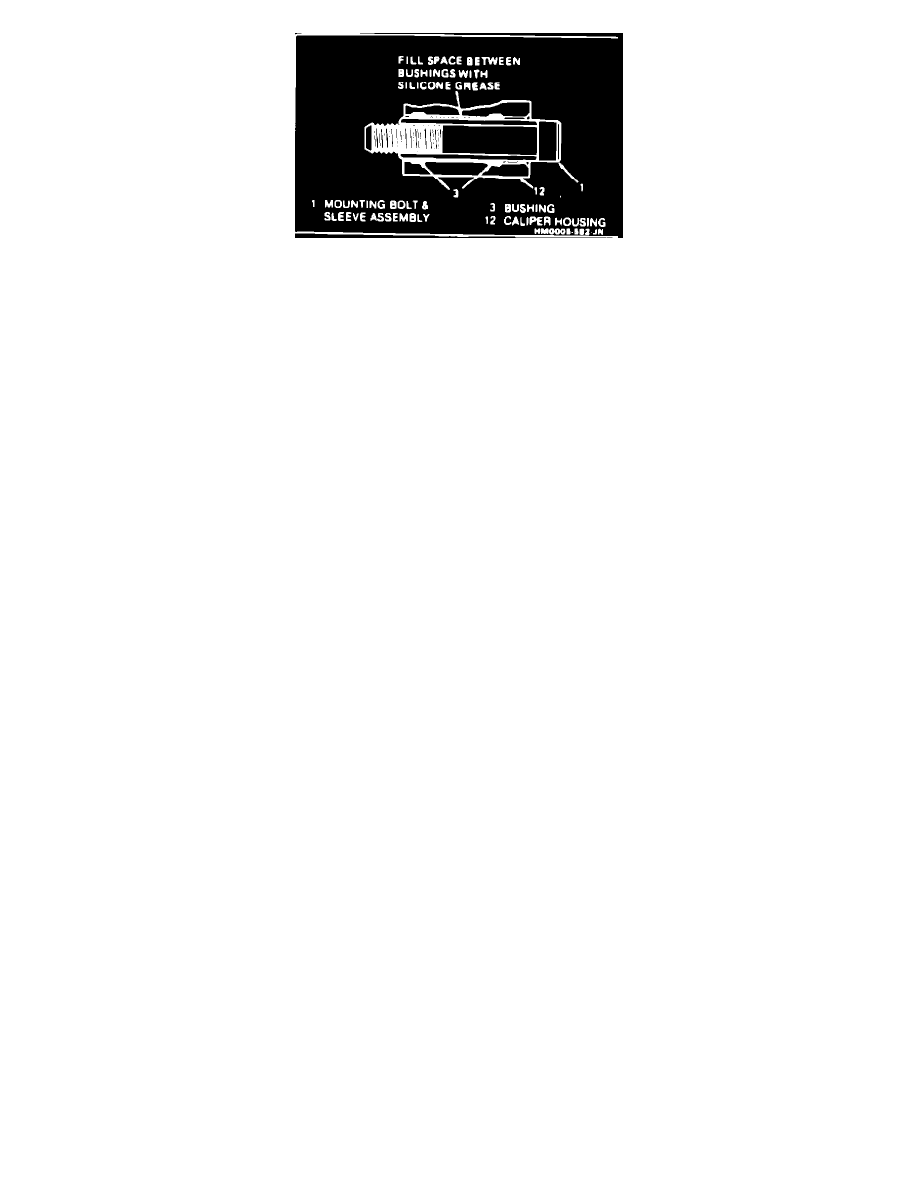Suburban 3/4 Ton 4WD V8-305 5.0L (1986)

FIGURE 3 - LUBRICATING CALIPER CAVITY
When servicing the caliper, the caliper bolts should be cleaned and the space between the caliper bolt bushings should be filled with silicone grease such
as Part Number 1052863 or equivalent. This will prevent the caliper dragging or binding on the mounting bolts. Refer to Figure 3.
LINING MATERIAL ABRASIVENESS:
The degree of abrasiveness of the brake lining material is determined by the manufacturer. A highly abrasive material will tend to create a rotor
out-of-parallel condition if system runout and caliper drag are present.
The properties and characteristics of brake linings are specified by Product Engineering. Some brake lining designs may be more aggressive when
stopping, i.e. higher friction coefficient, while others are less aggressive but may be very durable and long lasting. The linings for any specific vehicle are
selected on the basis of friction, wear, etc., to optimize front and rear braking for that specific vehicle.
The brake lining used should be whatever is recommended by the manufacturer in the parts catalog or in the latest service bulletin.
Brake pedal pulsation can also occur in the rear on drum brakes if there is radial runout in the drum and/or axle flange, or bearing.
Thickness Variation Check:
If a brake pedal pulsation condition is felt, a thickness variation check should be performed on the rotor.
Thickness variation can be checked by measuring the thickness of the rotor at four or more points around the circumference of the rotor. Use a
micrometer calibrated in one tenth increments per .001 inch. All measurements must be made at the same distance in, from the edge of the rotor.
A rotor that varies by more than 0.013 mm (0.0005-inch) can cause pedal pulsation and/or front end vibration during brake applications. A rotor that
does not meet these specifications should be refinished or replaced as necessary.
Rotor Refinish Recommendations:
Rotor refinish should only be performed because of non-parallelism (thickness variation), runout, or deep scoring grooves deeper than .015 inches. When
replacing a rotor with a new rotor from stock it should NOT require refinishing unless ons of the conditions mentioned above is present. Also, routine
replacement of disc brake linings does NOT require rotor refinishing.
When rotor refinishing is required the following recommended procedures should be used to obtain the proper micro-inch surface finish which is
required for new rotors (10 to 50 micro-inches with non-directional swirl pattern). When refinishing a rotor for a pulsation condition it is recommended
that at least 0.010 inch be removed from the inboard and outboard side of the rotor surface to insure removal of the high and low spots on the face of the
rotor.
Rough Cut
Finish Cut
Spindle
150 rpm
150 rpm
Depth of Cut Per Side
.005 inch
.002 inch
Tool Cross Feed Per Rev.
0.006-.010 inch
.002 inch max.
Vibration Dampener
Yes
Yes
Swirl Pattern-120 GRIT
No
yes
The following is also important:
^
The brake lathe must be in good working order and have capability to produce the intended surface finish.
^
Excessive spindle speed or too deep a cut can result in a rough finish.
^
Cutting tools must be sharp.
